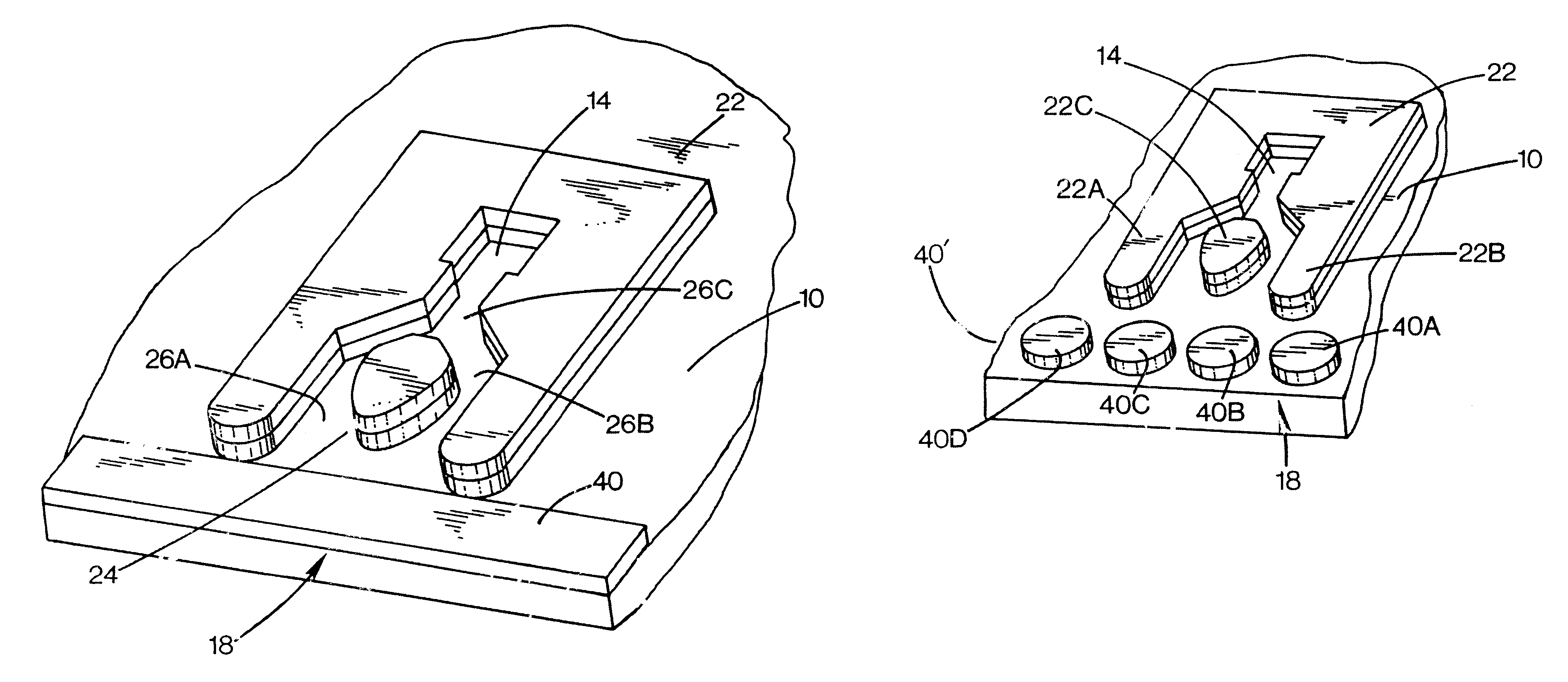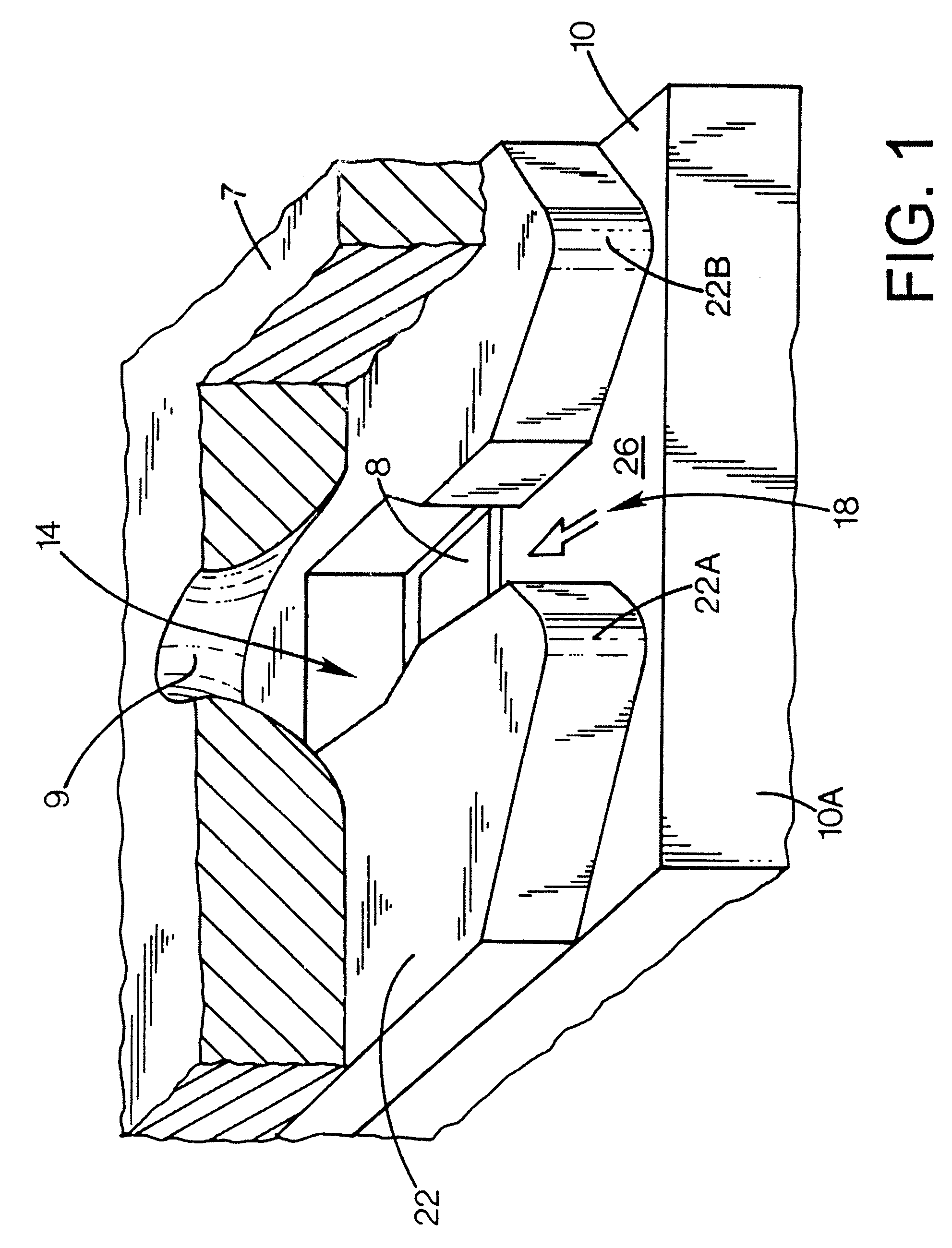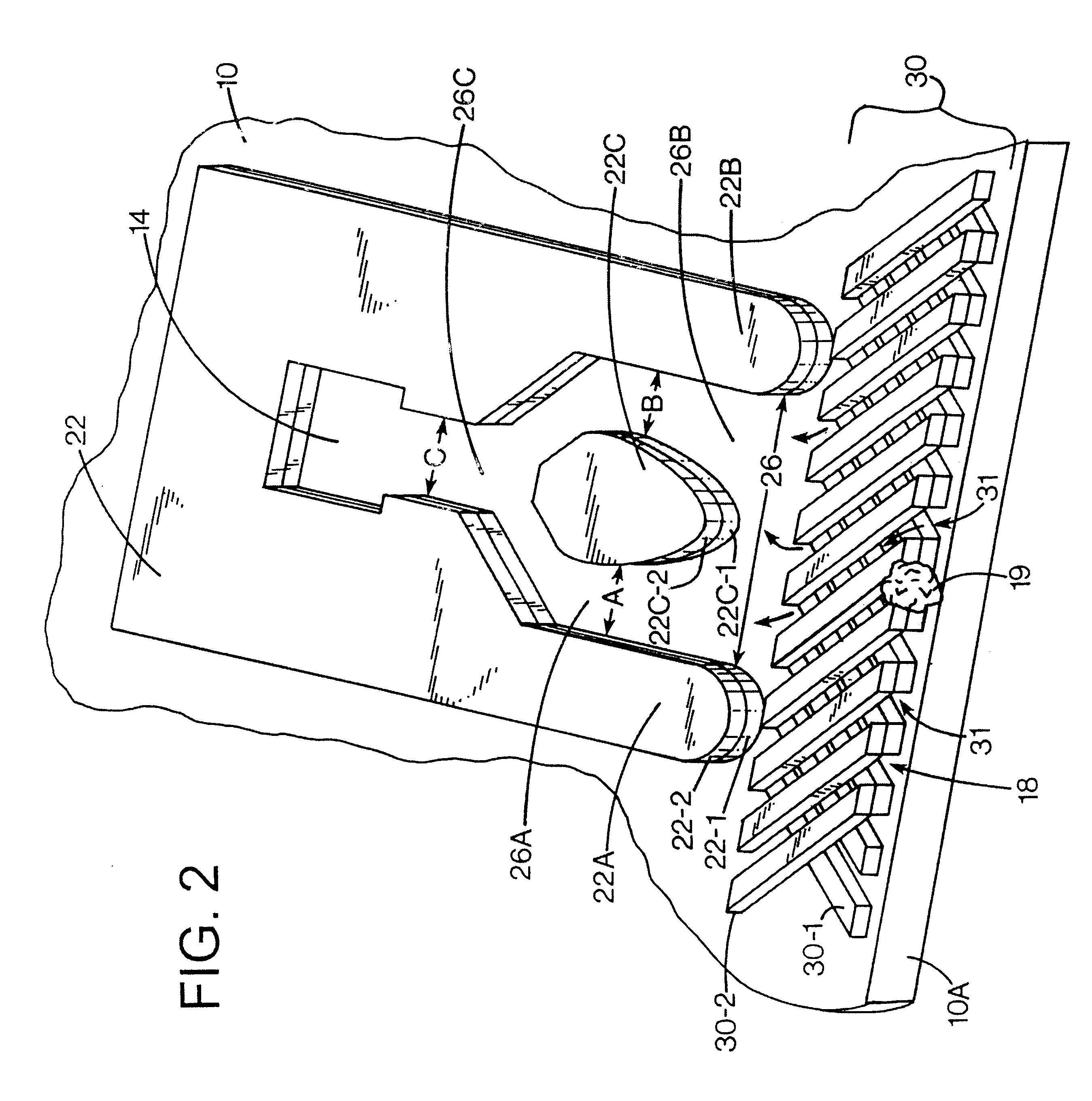Filtering techniques for printhead internal contamination
a filtering technique and printhead technology, applied in printing and other directions, can solve the problems of reducing the service life of the printhead, affecting the design and cost of the printer, and preventing the flow of ink for high throughput images, so as to reduce the feature size and eliminate printing defects
- Summary
- Abstract
- Description
- Claims
- Application Information
AI Technical Summary
Benefits of technology
Problems solved by technology
Method used
Image
Examples
Embodiment Construction
A magnified view of a portion of a typical thermal inkjet printhead for use in an inkjet printer is diagrammatically depicted in FIG. 1. The printhead includes a plurality of ink drop generators, each including a firing resistor, a firing chamber and a nozzle or orifice. Several elements of the printhead have been sectioned to reveal the silicon substrate 10, with a typical ink feed channel 26, firing chamber 14, and orifice 9 comprising a typical ink drop generator. Many such firing chambers are arranged in a group around an ink supply plenum for efficient refill of the firing chambers. Thus, associated with each firing chamber 14 is an orifice 9 formed in an orifice plate 7 disposed relative to the firing chamber 14 so that ink which is rapidly heated in the firing chamber by a heater resistor 8 is expelled as a droplet from the orifice 9. Ink is supplied to the firing chambers through an opening 26 called an ink feed channel. Ink is supplied to the ink feed channel from a much la...
PUM
 Login to View More
Login to View More Abstract
Description
Claims
Application Information
 Login to View More
Login to View More - R&D
- Intellectual Property
- Life Sciences
- Materials
- Tech Scout
- Unparalleled Data Quality
- Higher Quality Content
- 60% Fewer Hallucinations
Browse by: Latest US Patents, China's latest patents, Technical Efficacy Thesaurus, Application Domain, Technology Topic, Popular Technical Reports.
© 2025 PatSnap. All rights reserved.Legal|Privacy policy|Modern Slavery Act Transparency Statement|Sitemap|About US| Contact US: help@patsnap.com



